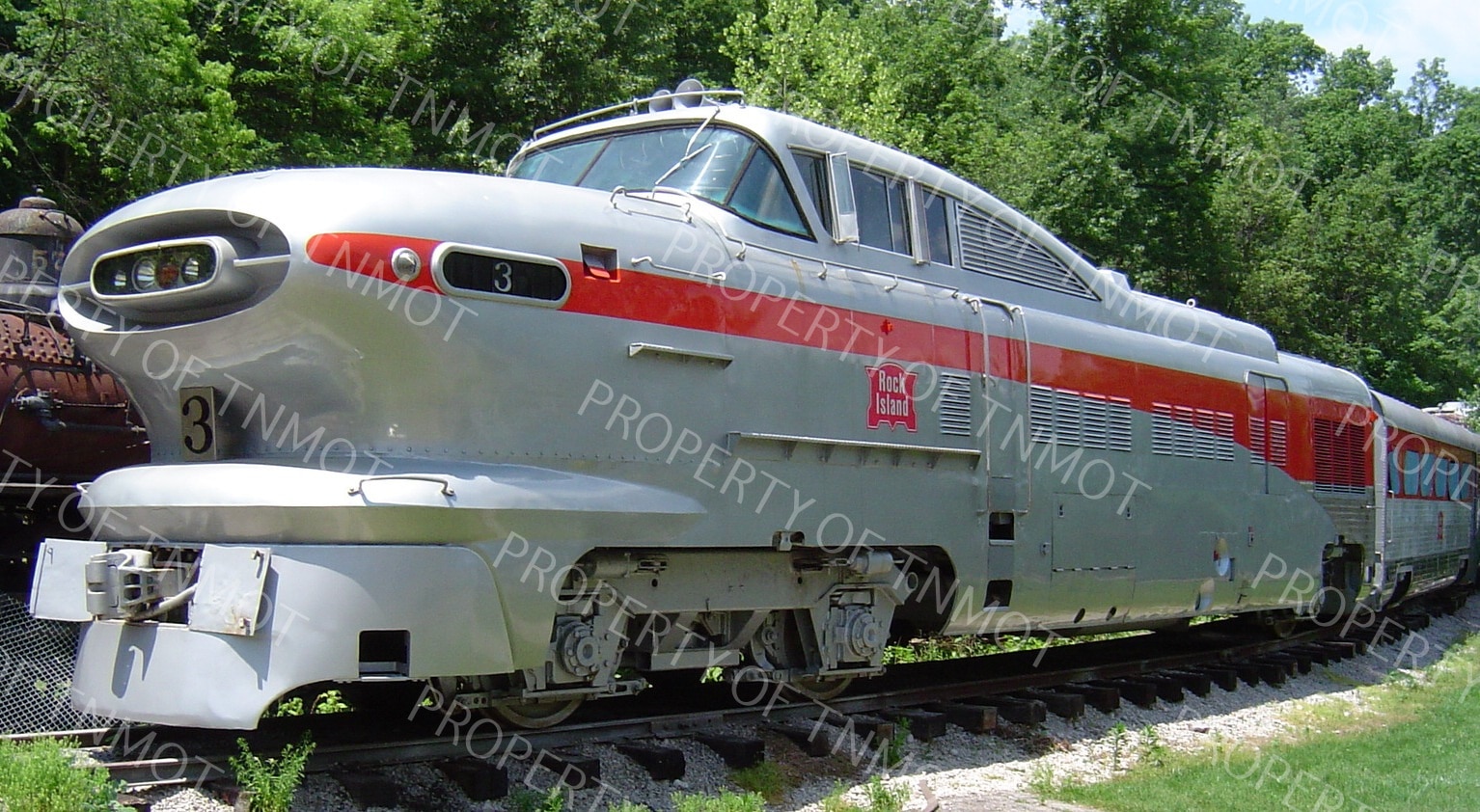Here’s a video about the introduction of the Aerotrain that also mentions the first time the Aerotrain was restored by the Museum. In a fortuitous event, “The Wall Street Journal” featured the Aerotrain this past weekend in its July 25/26, 2020, issue, page C14, mentioning The National Museum of Transportation in St. Louis, Missouri. TNMOT is currently restoring the Aerotrain again. The design is incredibly unique and well worth preserving.
General Motors used lightweight construction concepts in the building of a futuristic locomotive and 10 cars, which resulted in the “Aerotrain.” It was an attempt to lure passengers back to rail travel vs. air or automobile travel. Unfortunately, at high speeds the coaches rode very poorly and were very noisy since they were little more than widened bus bodies. The Chicago, Rock Island and Pacific ultimately used the trains for a decade as commuters from Chicago to Joliet, IL.











